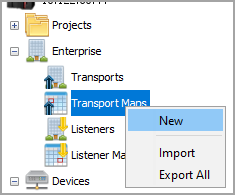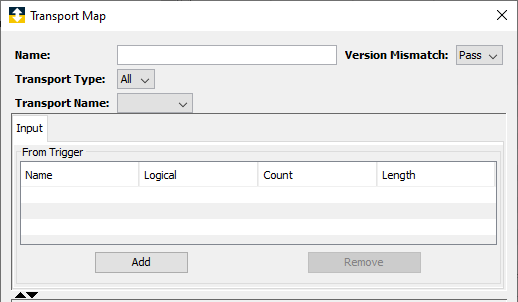Before creating a transport map, you must have defined a transport. It is also assumed that the Workbench is started and you have logged on. The following describes the steps to create a transport map that uses a database transport.
- From the Workbench left pane, expand the node that you want to add the transport map to.
- On the Transport Maps icon,
right-click to display its pop-up menu, and then click
New.

A Transport Map window appears.
- In the Name box, type a unique name for the transport map. A transport map name can be up to 64 characters and include letters, numbers, and the underscore character. Spaces are allowed.
- From the Version Mismatch drop-down list, accept the default Fail. When the trigger event occurs, the transport map used by the trigger must match the current transport map; otherwise, the trigger event will fail.
- From the Transport drop-down list, select the transport you want to use for the transport map. For this example, a database transport is selected. The To Enterprise section changes to accommodate the database transport. This is the data that will be stored on the enterprise system.
The next step is to configure the runtime payload. You will add a database table, define the map variables, and then associate the map variables with columns in the database table.
What's Inside